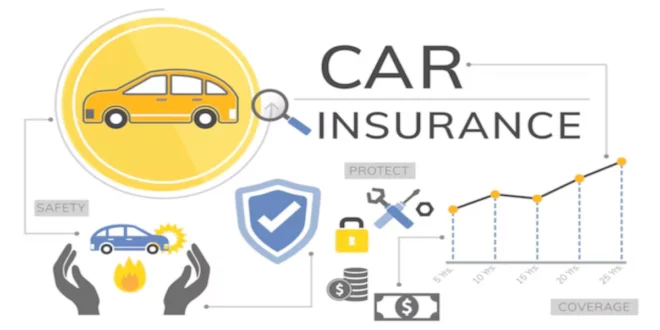Introduction to insurance imported cars
Imported cars bring a touch of luxury, unique styles, and advanced features that often surpass locally manufactured vehicles. However, owning an imported car comes with specific challenges, particularly regarding insurance. Insuring an imported vehicle is often more complex, costly, and nuanced than insuring a domestic one. This article explores everything you need to know about insurance for imported cars, including types of insurance, factors that influence costs, tips to reduce premiums, and common pitfalls to avoid.
Why Imported Cars Require Special Insurance
Imported cars vary widely in make, model, and value, often involving higher risks and replacement costs, which influence insurance policies. These vehicles might also require specialized parts that are more expensive and sometimes difficult to procure, adding to the insurance cost. Insurers categorize imported vehicles into two main types: grey imports and parallel imports, each with different insurance requirements.
Grey Imports vs. Parallel Imports
- Grey Imports: These are vehicles imported without the manufacturer’s official authorization, often from regions like Japan. Since they are not built to meet the safety and emissions standards of the importing country, they can be harder and more expensive to insure.
- Parallel Imports: These vehicles are imported through authorized dealers but from foreign markets. Since they generally meet local standards, parallel imports are often easier to insure and come with warranties, which can reduce insurance premiums.
Types of Insurance for Imported Cars
Just like any other vehicle, imported cars require different types of insurance to protect against various risks. Here’s a breakdown of the essential coverage options:
- Liability Insurance: Covers damage or injury caused to other parties in an accident. This is the minimum requirement in most regions.
- Collision Insurance: Provides coverage for damage to your imported car in case of a collision.
- Comprehensive Insurance: Covers non-collision-related incidents, such as theft, vandalism, or natural disasters.
- Gap Insurance: Since imported cars depreciate quickly, gap insurance can cover the difference between the car’s value and the amount you owe.
- Uninsured Motorist Coverage: Protects against accidents involving uninsured drivers, which can be especially useful for expensive imported cars.
- Modified Car Insurance: If the imported car has been modified, this additional coverage ensures the modifications are insured as well.
Factors Affecting the Cost of Insurance for Imported Cars
Several factors contribute to the cost of insuring an imported vehicle, many of which are unique to the nature of imported cars.
- Value and Rarity of the Car: Higher value and limited-edition imported cars attract higher premiums due to replacement costs and availability of parts.
- Age of the Car: Older imports may have lower values, but they can still incur higher insurance costs due to difficulty in finding parts.
- Country of Origin: Insurance costs can vary depending on where the car is imported from. Countries with different safety standards may increase premium costs.
- Maintenance and Repair Costs: Imported vehicles often require special repairs, tools, and parts, which can be costly. These maintenance requirements push insurers to raise premiums.
- Driving History: As with any insurance policy, your driving record significantly affects the premium rates. A clean record may result in lower costs, while a history of accidents or violations can lead to higher premiums.
- Intended Use of the Car: Cars used for daily commutes are generally more expensive to insure than those used occasionally or for special events.
- Location and Climate: The area where you live and store the car also impacts insurance. For example, regions prone to extreme weather might raise costs due to an increased risk of damage.
How to Reduce Insurance Premiums for Imported Cars
While insuring an imported car can be expensive, there are ways to reduce premiums. Here are a few practical tips:
- Shop Around: Different insurers offer various rates for imported cars. Shopping around can help you find the best deal.
- Increase Your Deductible: A higher deductible reduces premium costs. However, ensure you can afford the deductible in the event of a claim.
- Install Security Features: Alarms, GPS trackers, and immobilizers can lower insurance costs by reducing the risk of theft.
- Bundle Insurance Policies: Some companies offer discounts when you bundle multiple insurance policies together, such as home and auto insurance.
- Limit Modifications: While customizing is appealing, each modification can increase premiums. Keep modifications to a minimum to save on costs.
- Seek Specialty Insurers: Some insurance providers specialize in imported and exotic cars. They often offer tailored policies that may be more affordable.
Common Challenges with Insuring Imported Cars
Insuring imported cars comes with specific challenges, especially when dealing with unique brands and models that are rare in the domestic market. Here are some of the most common hurdles:
- Difficulty in Valuation: Imported cars can be challenging to value, especially when there are no local benchmarks. Insurers often have to rely on foreign markets for valuations, leading to higher premiums.
- Complex Claims Process: Imported cars may require unique parts that are difficult to find, leading to delays and complications in the claims process.
- Higher Risk of Theft: Imported cars, particularly luxury models, are often targets for thieves. This risk factor increases the insurance premium.
- Lack of Repair Facilities: Many mechanics and repair shops may not be equipped to service imported cars, making repairs costly and time-consuming.
- Limited Coverage Options: Not all insurers offer policies for imported vehicles, limiting choices for coverage and increasing costs.
How Imported Car Insurance Differs Around the World
Insurance policies for imported cars vary significantly by country due to differences in laws, vehicle standards, and insurance regulations.
United States
In the U.S., insurance for imported cars is readily available but often more expensive due to strict safety regulations. Some states have specific laws governing grey imports, requiring them to meet safety and emissions standards.
United Kingdom
The U.K. has a thriving market for imported car insurance, particularly for Japanese models. Insurers in the U.K. are accustomed to covering imported cars and often provide competitive policies for grey and parallel imports alike.
Canada
Canada has specific restrictions on imports, especially cars less than 15 years old. Imported cars that meet these regulations are easier to insure, though premiums can still be high due to the need for specialized parts and repairs.
Australia
Australia has strict regulations on car imports, with particular attention to emissions and safety standards. This impacts insurance costs, as imported cars must meet Australian standards, which can be costly to achieve.
Legal Requirements for Insuring Imported Cars
Legal requirements vary by country, but most regions mandate a minimum level of insurance coverage for all vehicles, including imported cars. Failure to comply with these requirements can result in fines or even the impounding of the vehicle. Here’s a general look at the minimum insurance requirements:
- Liability Coverage: Almost every country mandates liability insurance to cover damages to other people or property in case of an accident.
- Comprehensive and Collision: While not always required by law, comprehensive and collision coverage is recommended for imported cars to protect against extensive repair costs.
- Uninsured Motorist Coverage: In countries where uninsured motorists are common, this coverage is highly advisable for imported car owners.
Tips for Choosing the Right Insurance Policy
Selecting the right insurance policy for an imported car requires careful consideration of various factors. Here’s a step-by-step guide to help you make an informed choice:
- Evaluate Your Needs: Consider how often you drive the car, its value, and the likelihood of needing specialized repairs. This will help you decide on the necessary coverage levels.
- Research Different Insurers: Not all insurers offer policies for imported cars. Research companies that specialize in imported and exotic vehicles for the best options.
- Compare Coverage Options: Review the coverage options provided by different insurers. Ensure the policy covers parts replacement, labor costs, and specialized repair shops.
- Read the Fine Print: Imported car insurance policies may contain specific exclusions and limitations. Carefully read the terms to avoid surprises in the event of a claim.
- Seek Expert Advice: If you’re unsure about the type of insurance needed for your imported car, consulting an insurance broker with experience in imported vehicles can be beneficial.
The Future of Imported Car Insurance
As the demand for imported cars grows, the insurance industry is evolving to meet the unique needs of these vehicles. With advancements in technology, insurers are exploring ways to streamline the claims process for imported cars, using telematics, blockchain, and artificial intelligence. This could potentially reduce premium costs and make insurance for imported cars more accessible.
Autonomous and Electric Imported Cars
With the rise of electric and autonomous vehicles, the insurance landscape for imported cars is also shifting. These vehicles require specialized coverage due to their high-tech components and software, and insurance premiums reflect these requirements. Owners of imported electric vehicles should be prepared for potentially higher premiums as insurers adjust to the new risks associated with advanced technology.
Conclusion
Insuring an imported car can be challenging but manageable with the right approach. By understanding the types of insurance available, factors that influence costs, and ways to reduce premiums, owners can secure adequate coverage for their prized vehicles. Imported cars bring uniqueness and style, but they also require a thoughtful insurance strategy. With the insights provided in this guide, you can navigate the complexities of imported car insurance with confidence, ensuring both protection and peace of mind.
Frequently Asked Asked (FAQs)
What types of insurance are necessary for an imported car?
Typically, imported cars require basic liability coverage as well as comprehensive and collision coverage due to higher replacement costs. Additional options like gap insurance, uninsured motorist coverage, and modified car insurance are also recommended to provide full protection for the unique features of imported vehicles.
How does the cost of insurance for imported cars compare to domestic cars?
Insurance for imported cars is generally more expensive than for domestic vehicles due to higher risks, specialized parts, and sometimes different safety standards. However, the cost varies based on the car’s make, model, origin, and whether it’s a parallel or grey import.
Can I reduce insurance costs for my imported vehicle?
Yes, there are several strategies to lower premiums, such as installing security features, increasing deductibles, shopping around for insurers specializing in imports, and limiting modifications. Bundling policies and maintaining a clean driving record can also reduce costs.
Are there specific legal requirements for insuring imported cars?
Most countries require imported vehicles to have at least liability insurance. However, comprehensive coverage is advisable to safeguard against high repair costs. Some regions may have stricter requirements depending on the car’s origin and compliance with local safety and emission standards.
What challenges might I face when insuring an imported car?
Challenges include finding an insurer willing to cover rare or modified vehicles, handling complex claims, and paying higher premiums. Additionally, sourcing parts for repairs can delay claim processing, especially for grey imports.
How can I choose the best insurance for my imported car?
To choose the right insurance, assess your vehicle’s specific needs, research insurers experienced with imported cars, and compare policies for coverage of repairs, parts replacement, and repair facilities. Consulting an insurance broker familiar with imports can also help ensure you get optimal coverage.
READ ALSO: Work Dresses Australia: Finding the Perfect Blend of Style, Comfort, and Professionalism
 Touch Blog
Touch Blog



